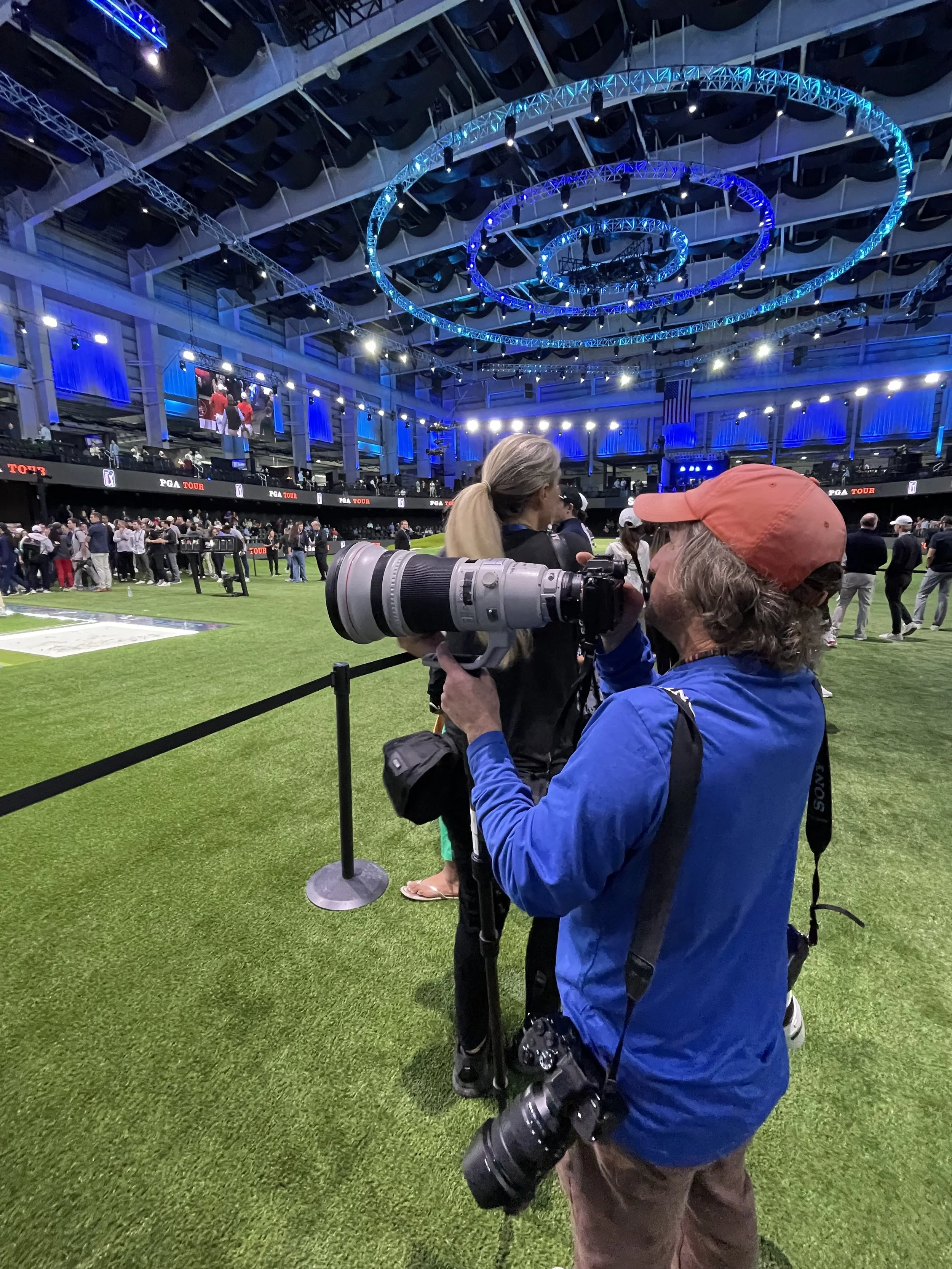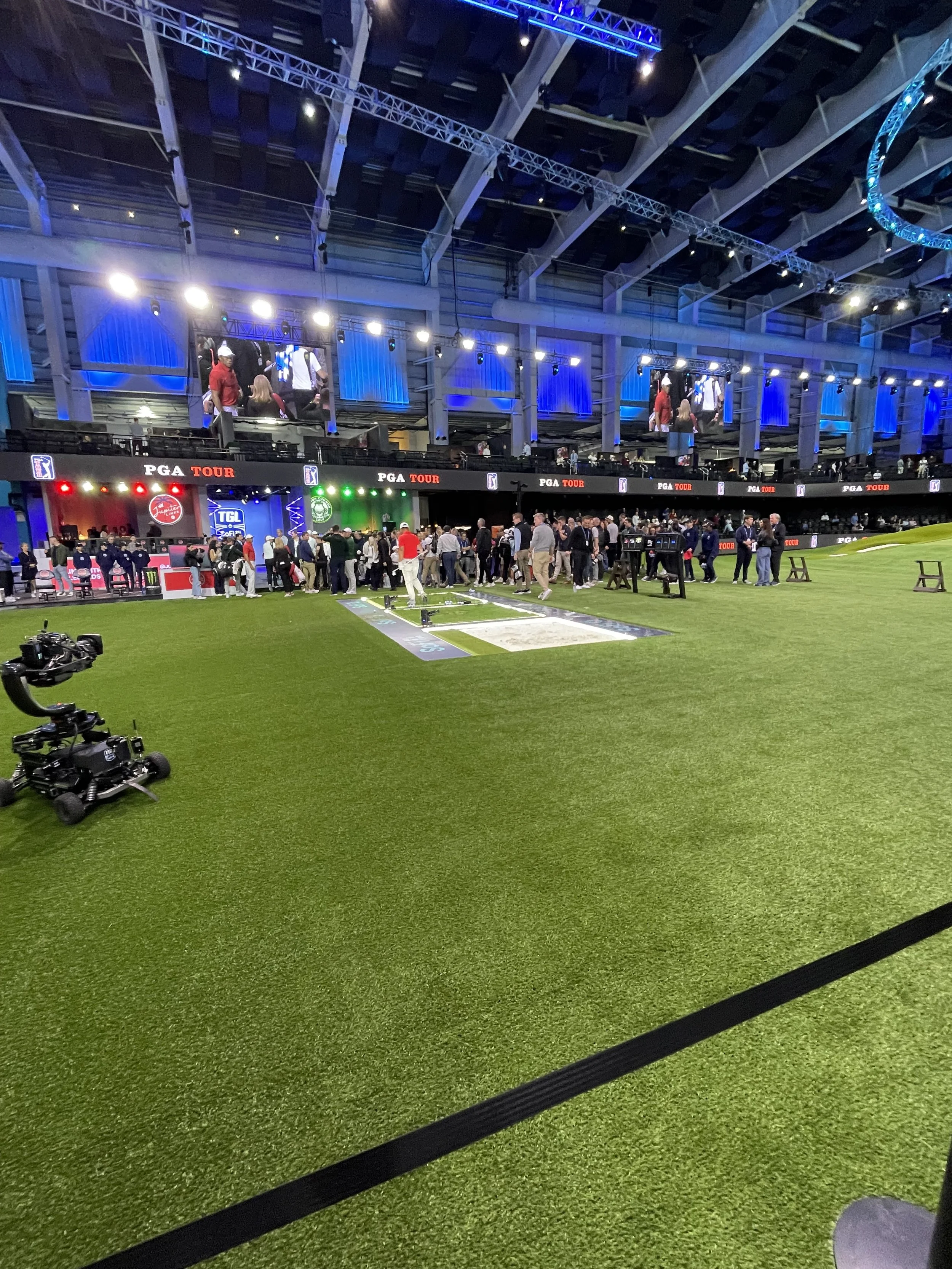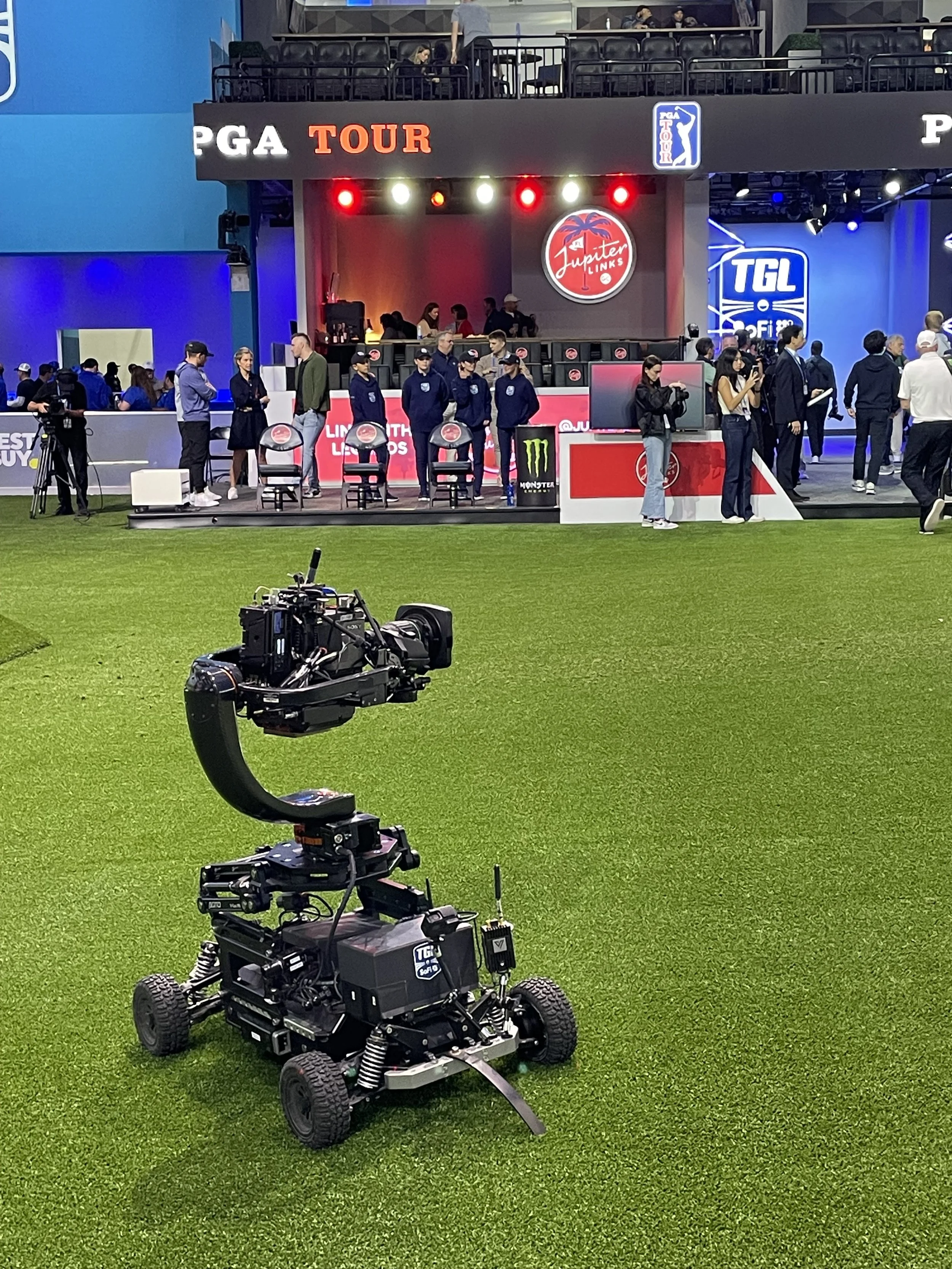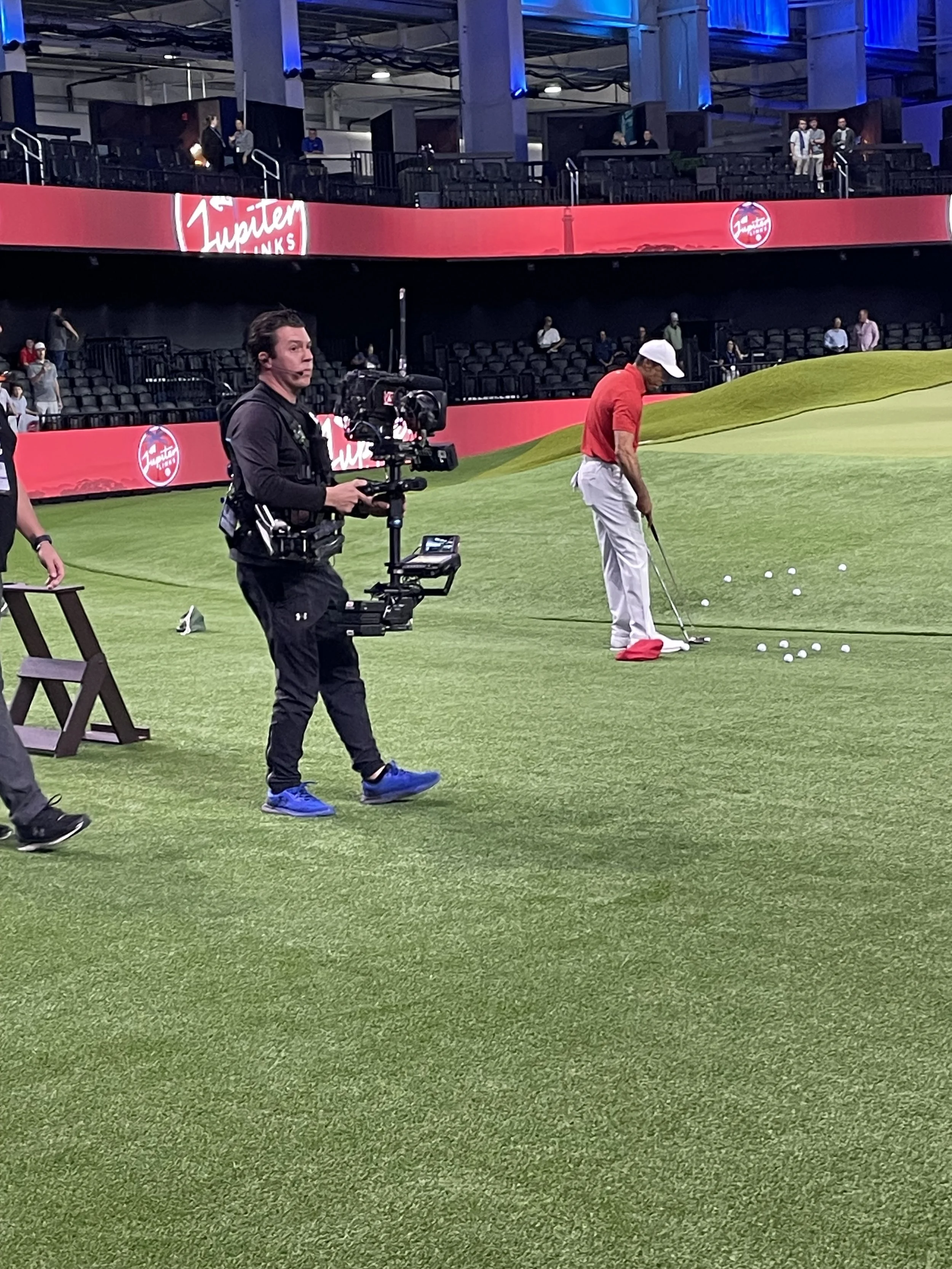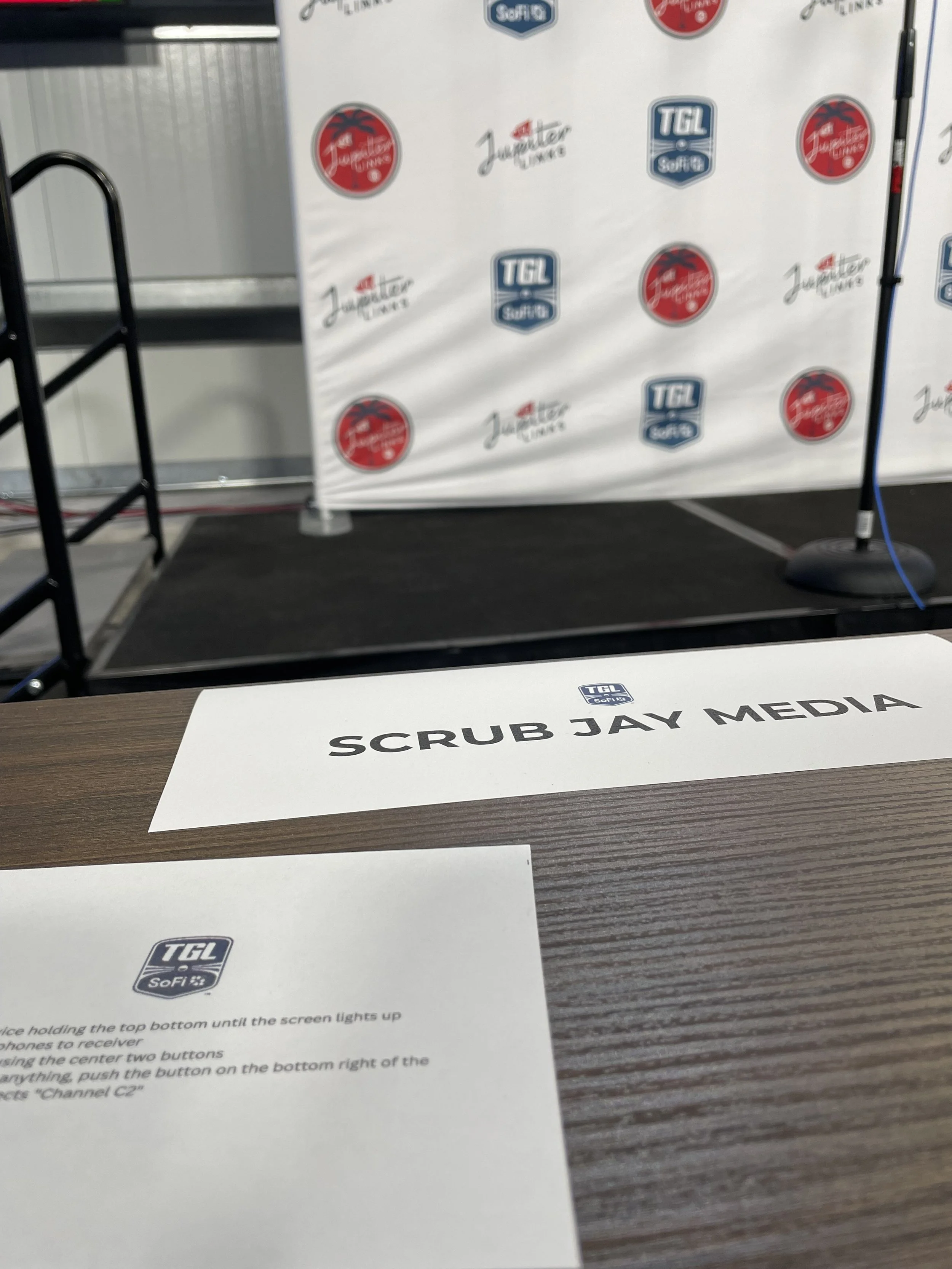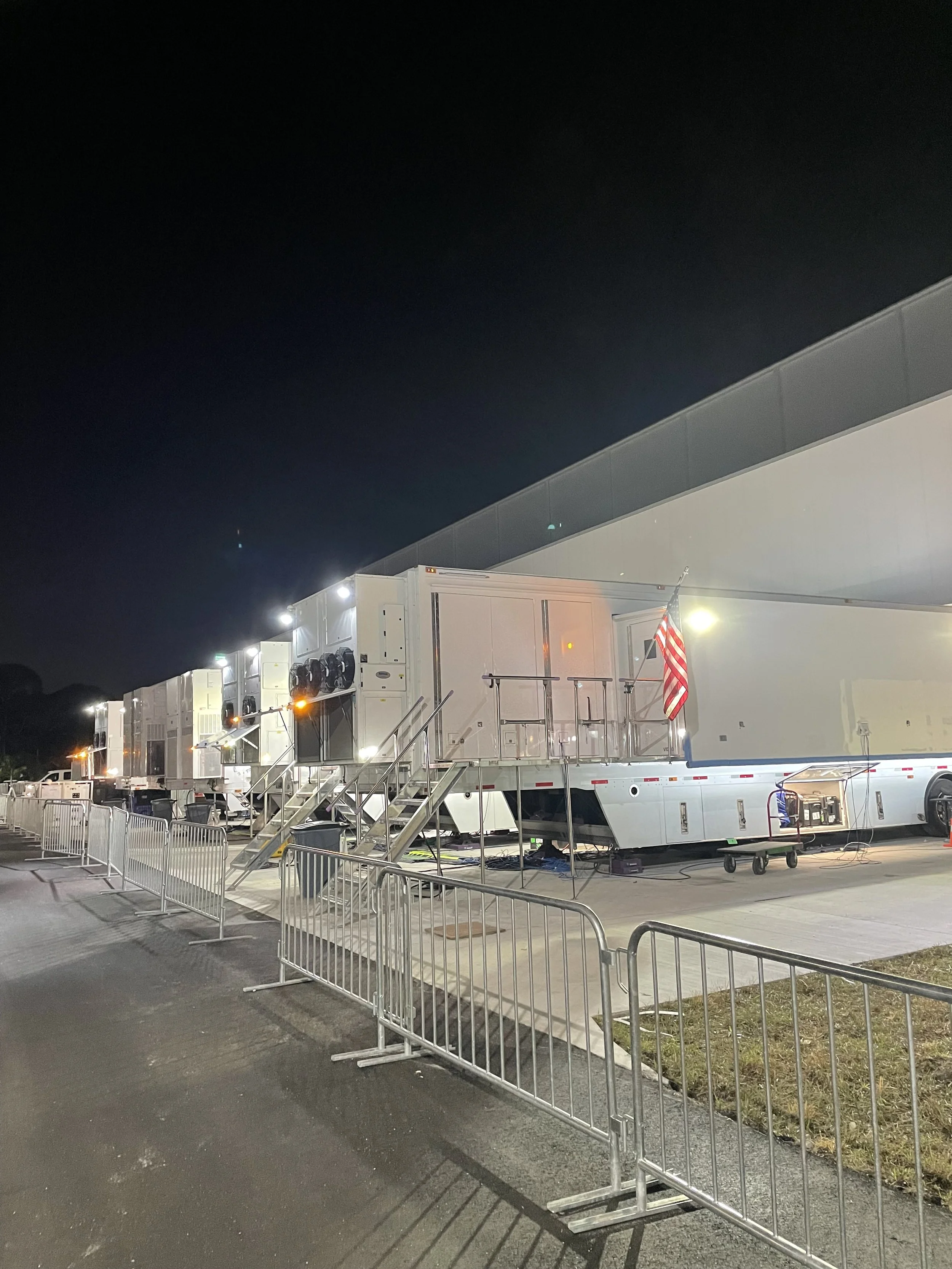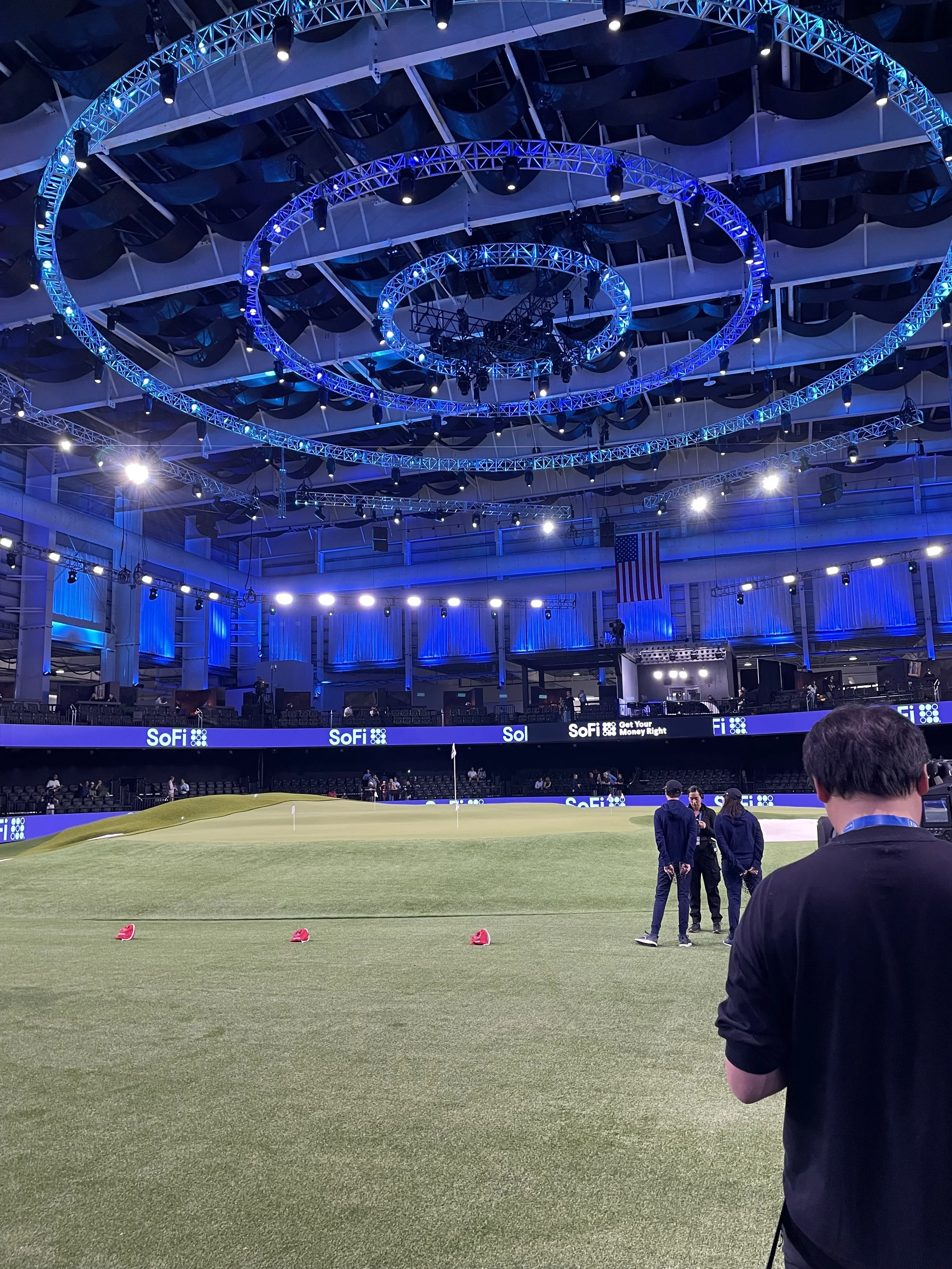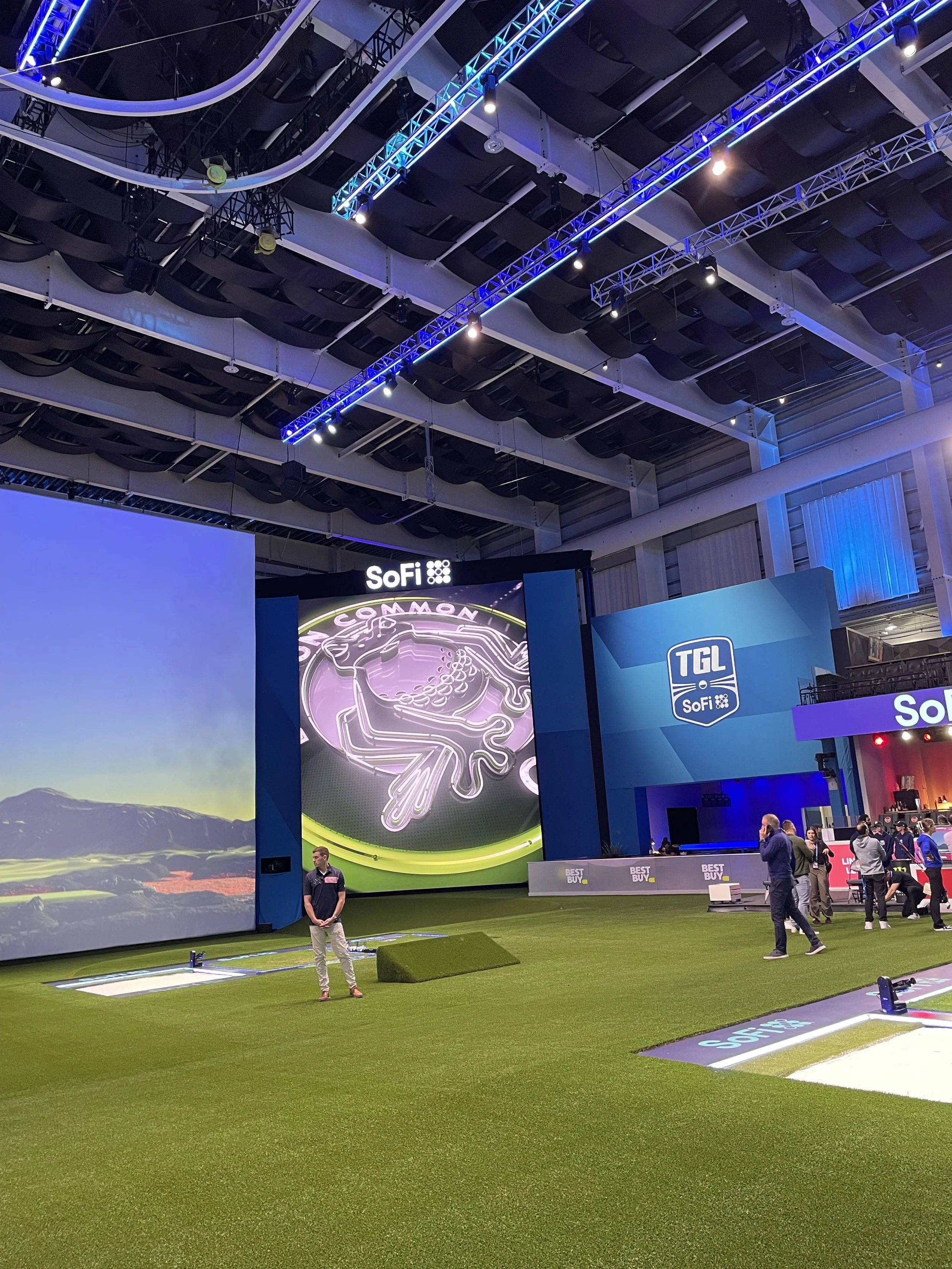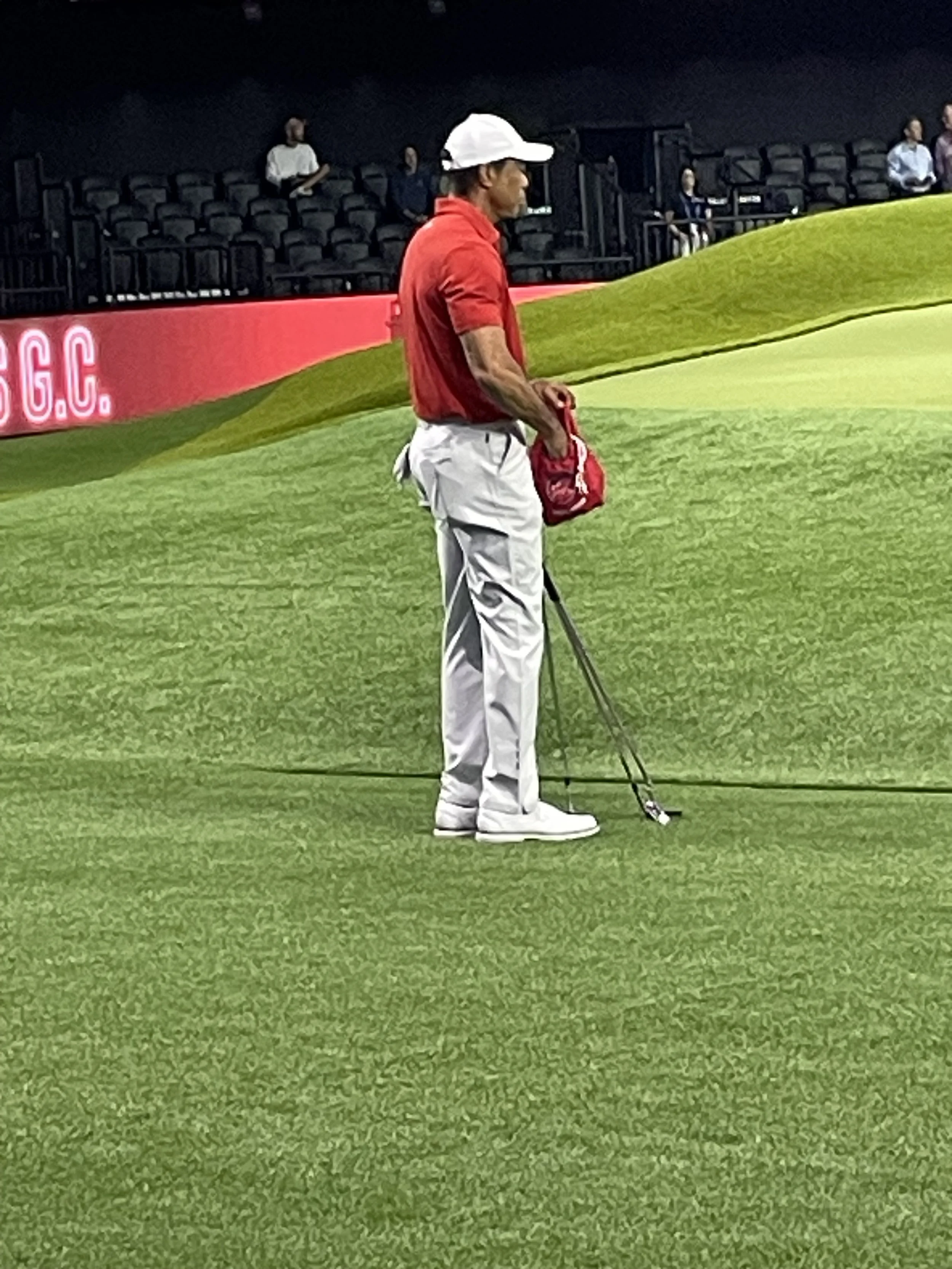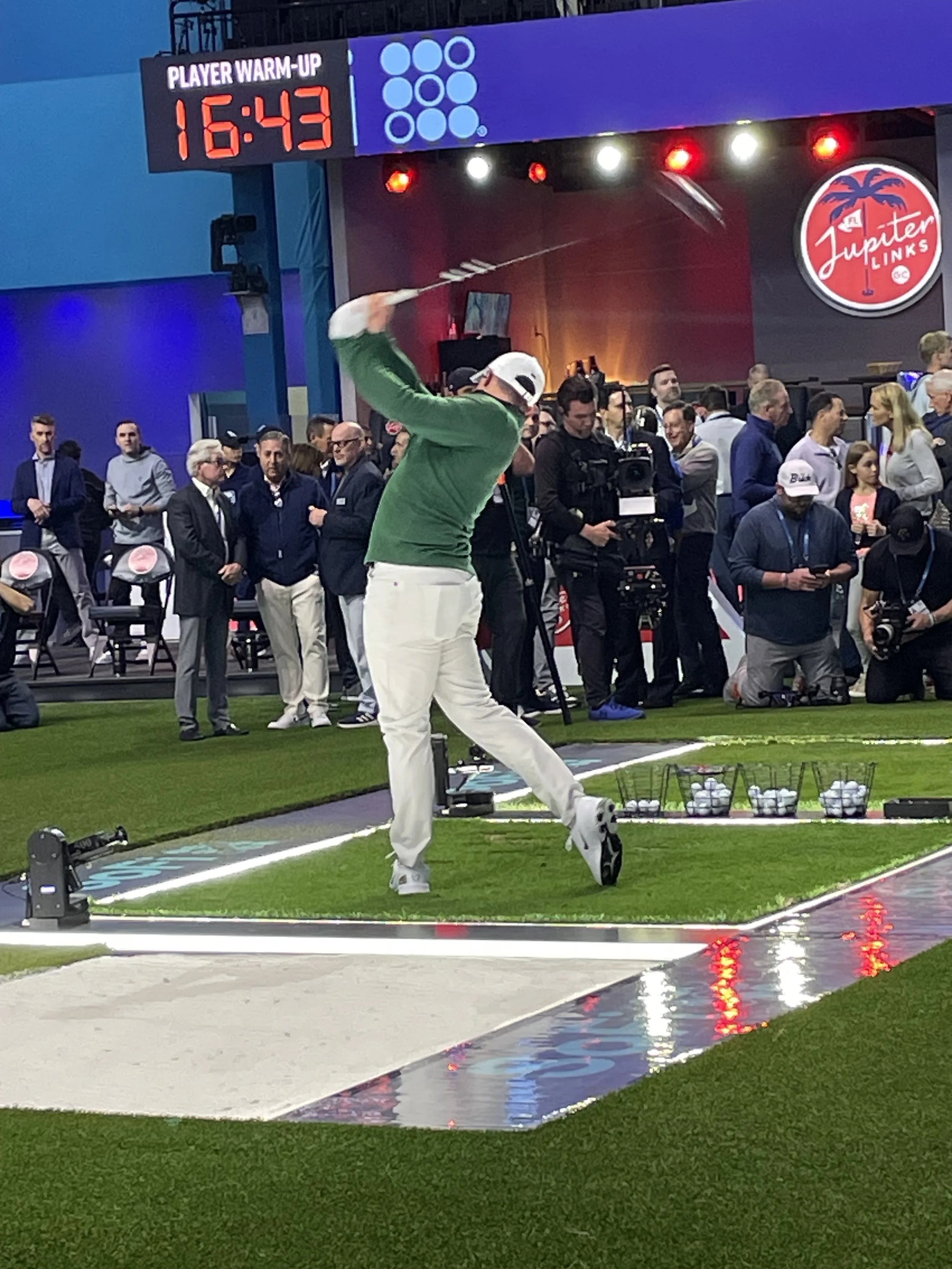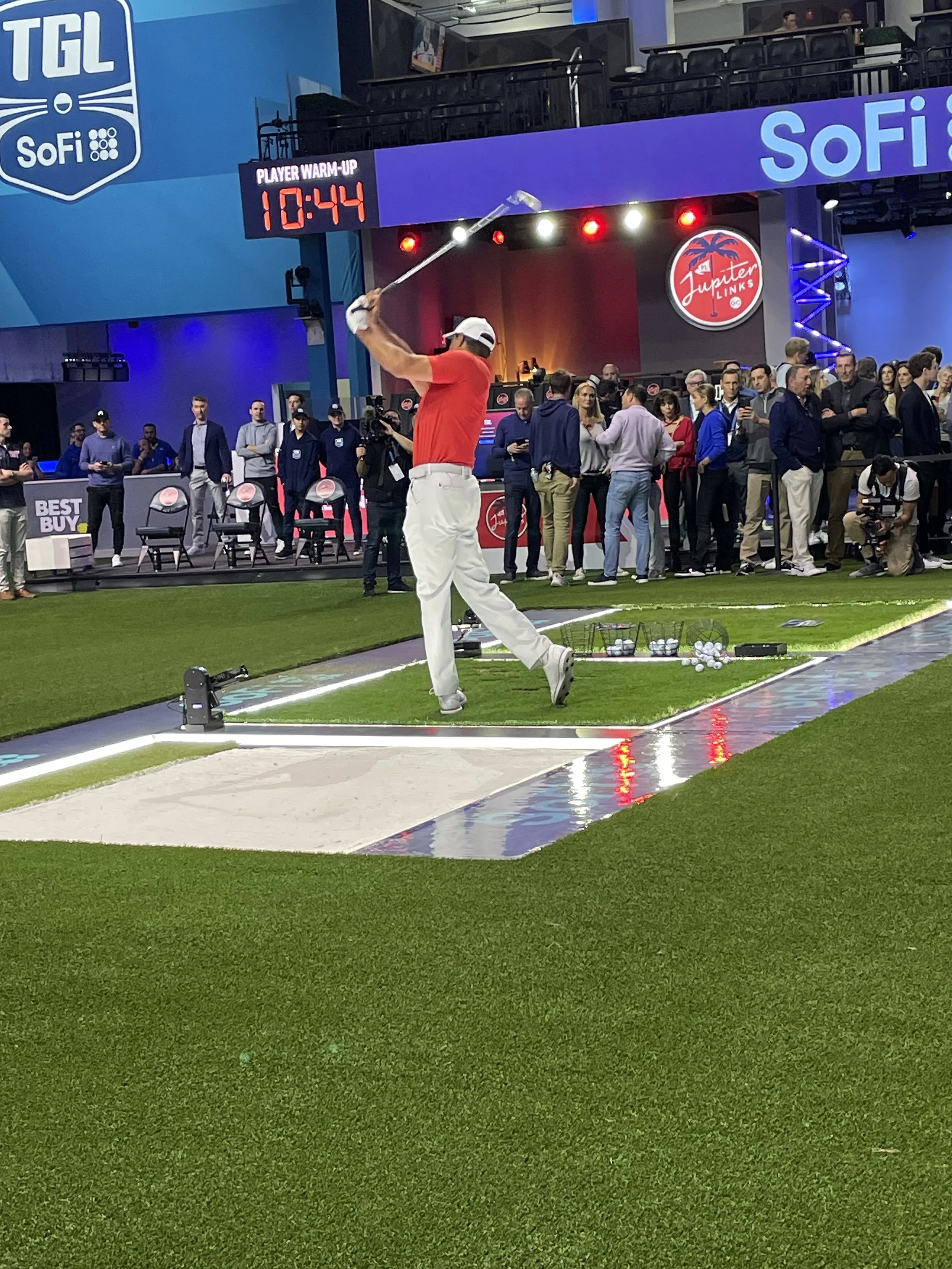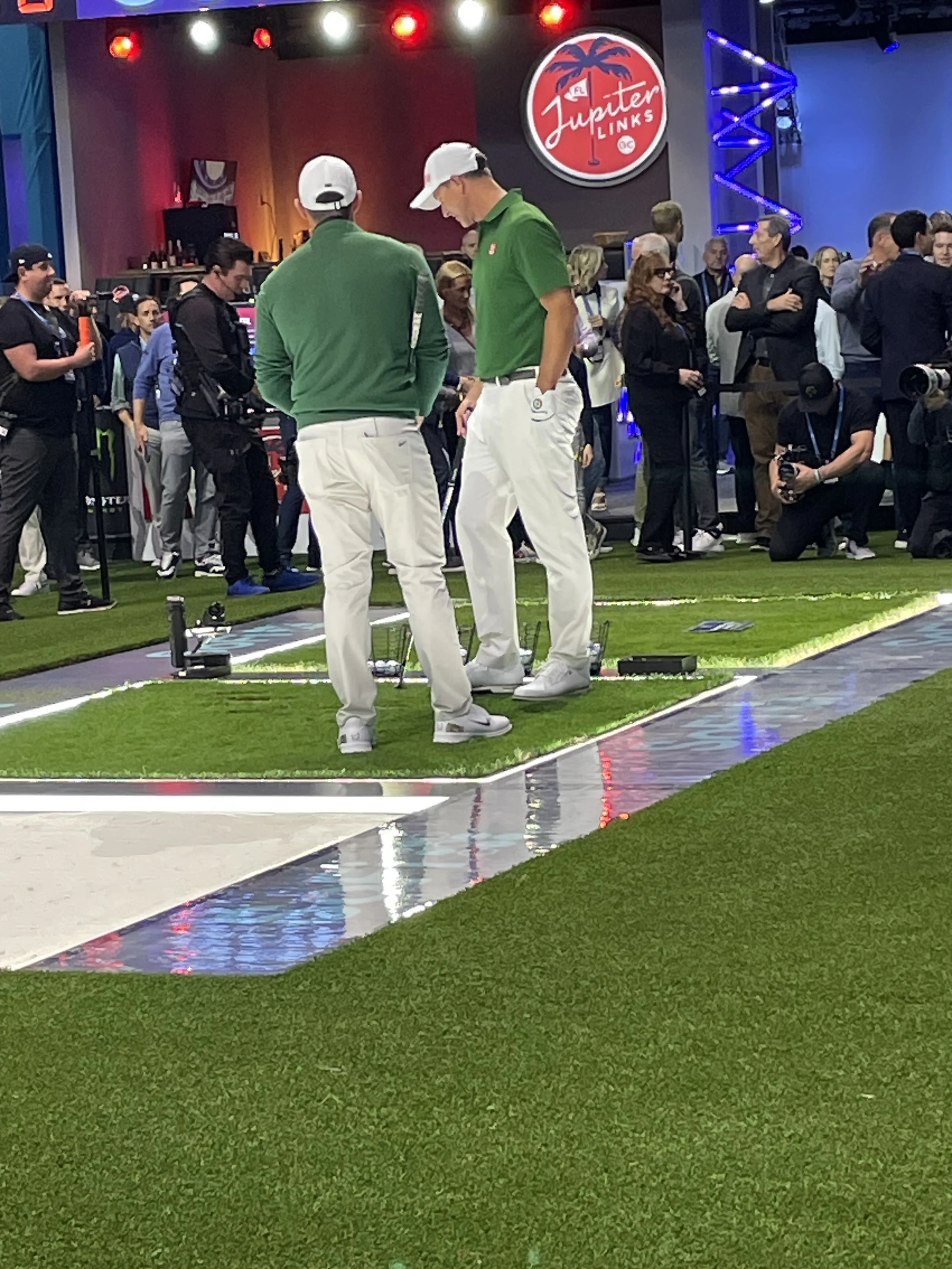Live From The SoFi Center, It’s TGL
Had a chance to attend my first live TGL match at the SoFi Center in Palm Beach Gardens, Florida this week. It happened to be Jupiter Links GC against Boston Common, better known as “Tiger vs. Rory.” After three straight weeks of blowouts, TGL finally got a competitive match, going to “overtime” with a head-to-head closest-to-the-pin contest that was sealed by Tom Kim and Kevin Kisner from Tiger’s Jupiter Links roster. The differences between the Media Day demo and live action were dramatic.
First, the sheer number of people. Media parking was in the “Red Lot” behind Palm Beach State College’s Eissey Campus Theatre, which is a block away from the SoFi Center. The Red Lot is also employee parking, and the lot was largely full when I left after the match. Bus drivers, security guards, building maintenance, TV crew, servers, bartenders, media officials — it takes a village to stage a match at this $50 million dollar facility. While the current and future value of TGL as an entertainment vehicle is up for debate, there is no uncertainty about the economic impact at the venue and the fact that hundreds of people depend on it.
The Media Center is a small curtained area located behind the giant simulator screen. When players hit driver during the match, it sounds like a gunshot. It was also striking (no pun intended) at how soon after the first ‘pop’ you hear the second one — the 40-second shot clock at work!
For a building that holds only 1,500 people, there are a lot of hospitality suites, as expected. “Owner’s Boxes” are set up under team colors at floor level, close to the teeing area. MLB All-Star Mike Trout, a minority investor in Tiger’s team, was spotted hobnobbing with Charlie Woods and a couple of Charlie’s buddies in the Jupiter Links box.
(Sidebar: there is no cooler gig than being a legitimate Friend Of Charlie, and that’s not a cynical knock.)
David ‘Big Papi’ Ortiz was also present, a natural fit in Boston’s box. During an interview with the aspirationally positive Marty Smith, Papi dropped a “this is our f**king city”, which may or may not have been planned.
Patrons of a certain ticket level are allowed on the floor during player warmups, which began at 5:30pm, sixty minutes prior to air. There were hundreds of suite-level ticket holders mingling at that hour. Given that the overtime match didn’t end until around 8:45pm, that’s at least a four-hour night depending upon the commute — about the same as attending an NBA game. Plenty of entertainment value for the dollar, but also an odd feature for a league that bills itself on speed of play and a tight TV window.
On the topic of time: the ESPN broadcast for this match started at 6:30pm, but the first shot didn’t happen until 6:48pm, after the elaborate intros, interviews with Smith or Scott Van Pelt, and a couple of commercial breaks. Those TV breaks, while far fewer than outdoor golf, are still noticeable; TGL does its best to keep the crowd amped with typical NBA-style arena theatrics, including an in-arena host.
Every TGL match has a referee, whose role is much larger than I anticipated. His job is to keep the show moving and enforce the rules, which means he decides when the 40-second shot clock starts. History will note that the first shot clock violation in TGL history — signaled by the ref with a few pats on the top of his head, just like basketball — was committed over a putt by TGL co-founder Tiger Woods. Those of us who had the Atlanta Drive’s Patrick Cantlay as the odds-on favorite to accept TGL’s first slow-play penalty were disappointed.
I went back and forth from the arena to the media center and noticed something else — there’s a lengthy delay between what’s happening on the field of play and the signal to the TV screens in the media center. Much like the roars at Augusta, we in the media center heard something happen well before we saw something happen. There’s an inside baseball conversation here about how the ESPN broadcast is sent to the TV’s in the media center, but I’ll just say that giving the media a live return would be an improvement.
Walk-up music was a constant during the introductions and before each shot. I’m wondering if the players get to pick the tunes. Would Adam Scott really choose “Land Down Under?”
The accuracy of the simulator has become a concern over the first four matches. Short irons have a propensity to go long. Longer shots were frequently landing further left or right than the player expected. A couple of players were caught on mic discussing where to aim to create a draw or fade, as if there were a bug that they’ve already figured out, a way to ‘fool’ the simulator. Tiger, in particular, was shaking his head often on Monday after a screwy yardage.
I also noticed that every player’s shirt was a slightly different shade of his team’s color. Took me a second to realize that, even though TGL team polos are available for purchase, the participants weren’t wearing them. Instead, they were all wearing shirts from their own clothing suppliers. Jupiter Links’ primary color is red, but Tiger’s Sun Day Red is not exactly the same as Kevin Kisner’s Peter Millar red or Tom Kim’s Nike red. Boston’s Celtic-inspired green looks different in Uniqlo (Adam Scott) or Flag & Anthem (Keegan Bradley) — the latter of which already has a TGL line available for purchase.
Owing to the presence of Woods and McIlroy — and the fact that the match remained competitive until the bitter end — the energy in the building was good. Fans seemed satisfied. From your seat, you can hear the players’ microphone conversations and get a closer-than-usual view of the stars. The personality of each player will determine his embrace of the concept (and Tom Kim was chewing the scenery all night), but as with Media Day, I got the sense that the players are invested, particularly in the team aspect. It was fun, with enough celebrity juice to draw out a South Florida crowd that likes to see and be seen.
There’s already plenty of unsolicited Golf Twitter snark out there about the TV product, which makes sense given that this venture is clearly geared towards the television audience. My goal in making the drive from Orlando to Palm Beach Gardens was to learn how it translates into a live sporting event. Conclusion: it’s pretty good. If a fan paid for a ticket that granted access, he/she would be satisfied. There’s a lot of NBA vibe in the building. The media experience is familiar. It felt like sports.

